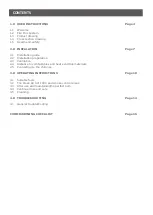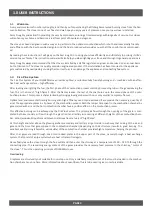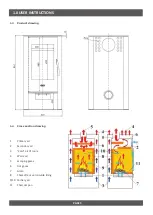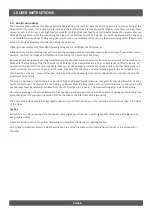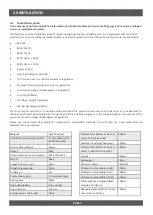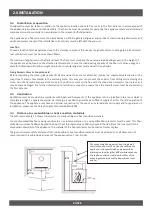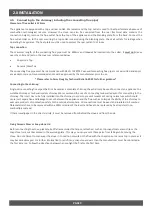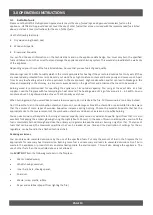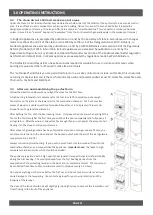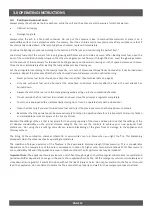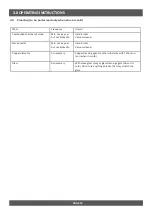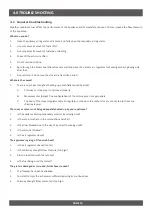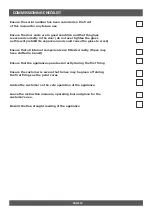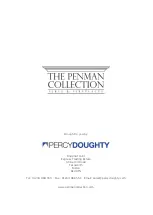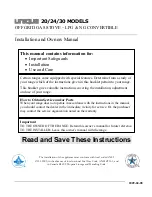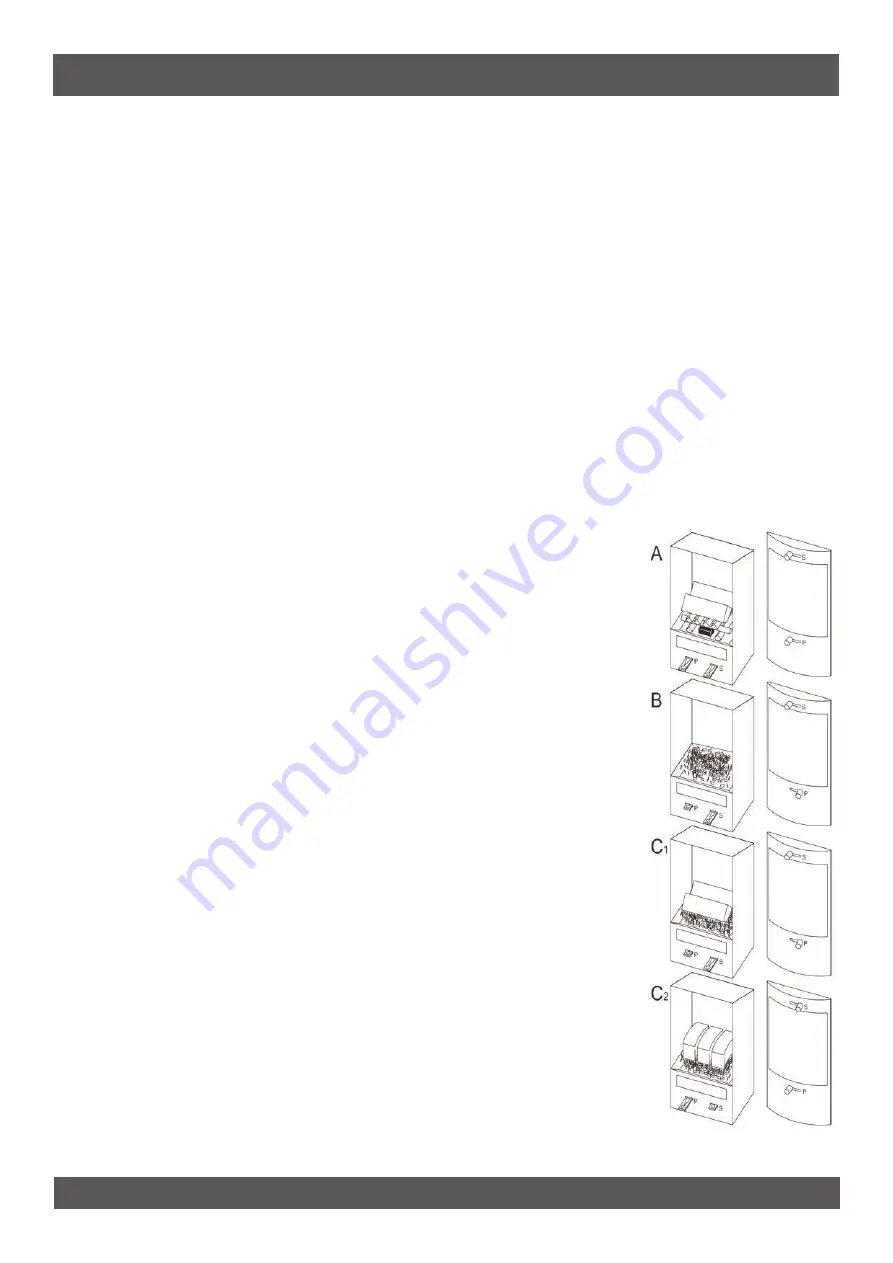
3.0 OPERATING INSTRUCTIONS
3.2 The Clean Air Act 1993 and smoke control areas
Under the Clean Air Act local authorities may declare the whole or part of the district of the authority to be a smoke control
area. It is an offence to emit smoke from a chimney of a building, from a furnace or from any fixed boiler if located in a
designated smoke control area. It is also an offence to acquire an “unauthorised fuel” for use within a smoke control area
unless it is used in an “exempt” appliance (“exempted” from the controls which generally apply in the smoke control area).
In England appliances are exempted by publication on a list by the Secretary of State in accordance with changes
made to sections 20 and 21 of the Clean Air Act 1993 by section 15 of the Deregulation Act 2015. Similarly, in
Scotland appliances are exempted by publication on a list by Scottish Ministers under section 50 of the Regulatory
Reform (Scotland) Act 2014. In Northern Ireland appliances are exempted by publication on a list by the
Department of Agriculture, Environment and Rural Affairs under Section 16 of the Environmental Better regulation
Act (Northern Ireland) 2016. In Wales appliances are exempted by regulations made by Welsh Ministers.
The Firefox 8 Eco and Classic 8 Eco have been recommended as suitable for use in smoke control areas when
burning dry wood and the “authorised” smoke free solid fuels.
The “authorised” solid fuels you are permitted to burn in a smoke control zone include: anthracite (this is naturally
occurring smokeless fuel and is the test fuel normally used and recommended), Ecoal 50, Homefire, Homefire ovals,
Phurnacite, Taybrite and Multiheat.
3.3 After use and maintaining the perfect burn
Follow the directions below when you light the stove for the first time.
A high burning temperature is necessary for the fuel to catch fire quickly so put enough
fire-starter on the grate at the lower part of the combustion chamber. Put 2 or 3 smaller
pieces of wood or a similar quantity of wooden briquettes, or 3 to 4 pieces of brown coal
briquettes on the grate (see picture A)
After lighting the fire, shut the door leaving it ajar. Only leave the door ajar when you light the
fire for the first time (after the first time you will shut the door completely) and fully open all
air regulators. After the wood or briquettes have caught fire you can adjust the amount of air
flowing into the stove to suit your preference.
After a layer of glowing embers has been formed and you can no longer see any flames, you
can place more fuel into the stove and set the desired output with the aid of the air regulators
(see picture B, C1 and C2)
Always maintain optimal burning. If you use too much fuel or let too much air flow into the
combustion chamber, you may overload the appliance.
Important note
: this leads to high
temperature and emissions which should be avoided.
The appliance is painted with a high quality heat resistant lacquer that gains its final stability
during the first heating. The smell produced from the first heating derives from the
evaporation of the protecting lacquer in the paint and is completely normal. The room must
be ventilated from time to time to allow the smell to disperse (every 1-2 hours).
Do not put anything on the stove before the first use and do not touch its surfaces as it will
cause damage to the lacquering. Use protective gloves for your own protection and the
integrity of the lacquer.
The door of the stove should be kept slightly ajar during first use to prevent the insulation cord
from sticking to the front of the appliance.
PAGE 11


